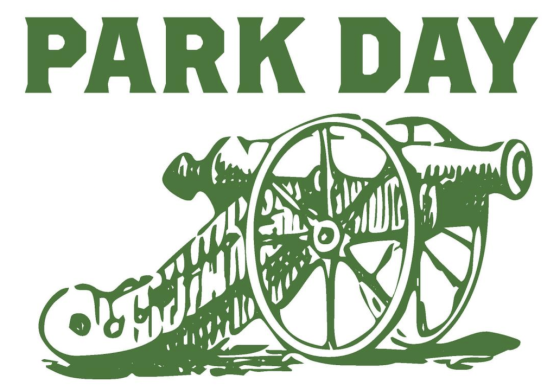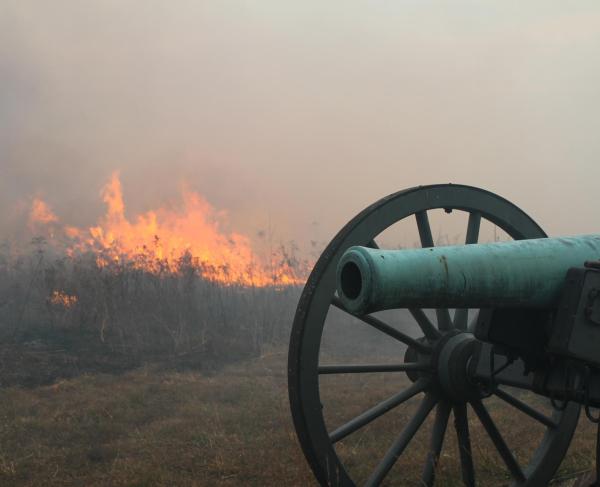It’s All About Balance
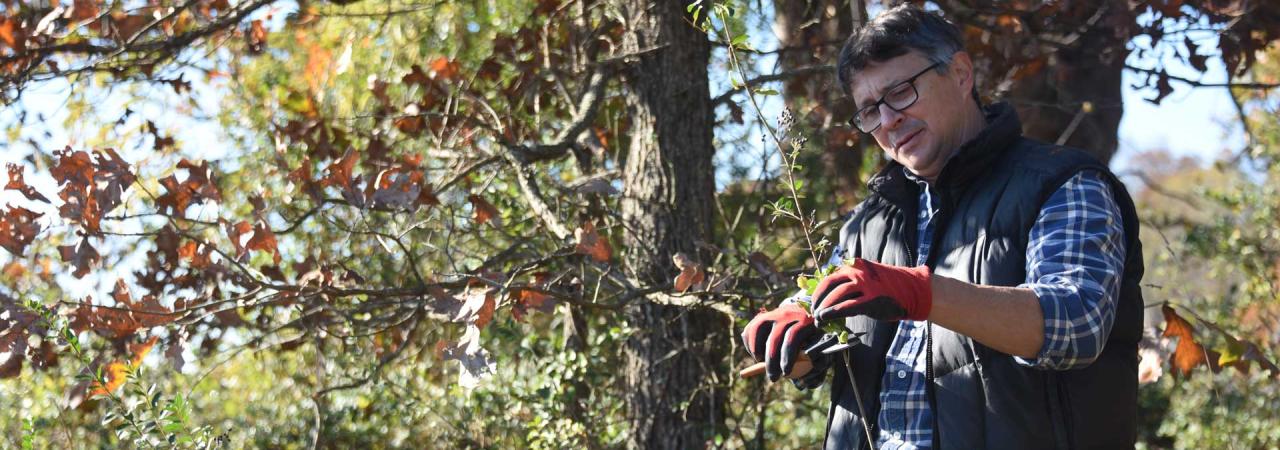
American Battlefield Trust Land Stewardship Manager Tom Saeilli
The protection of America’s hallowed ground serves several purposes, but it’s most important to remember that balance is at the heart of it all. We at the Trust are innately drawn to these lands for the role they played in transforming American history, as graveyards for those soldiers who sacrificed their lives in battle, and for their ability to deliver place-based understanding for students of history. But these grounds have a story that expands beyond the wartime actions that unfolded upon them — they are part of the natural world, full of diverse plants, animals, waterways, rock formations and more, that contribute to various ecosystems.
With a reverence for the Trust’s mission of preserving and restoring historic battlegrounds combined with a passion for environmental conservation, the Trust’s Land Stewardship Manager Tom Saielli tells us how he has sought to balance the two since coming to the organization in September and how he’s working with volunteers on Trust lands to combat the most pressing environmental issues.
How do you see your role, and the function of environmental conservation more broadly, within the Trust’s mission of battlefield preservation?
Tom Saielli: I’m a conservation biologist, so doing ecosystem restoration is what I like best. But at the Trust, I saw a great opportunity for us to merge the preservation of battlefields and their history with ecological work and habitat restoration. When I brought that to the Trust, folks here got excited. With all this land that we’re conserving, why not do some good stewardship with it? That’s what I’m trying to do — take these lands and see if we can get promote good quality habitats for wildlife, ensure our land has clean water going to the Chesapeake Bay and, importantly, help the land sequester more carbon by having native ecosystems with trees, indigenous grasses and healthy wetlands. It’s adding a new layer to the work that we’re doing.
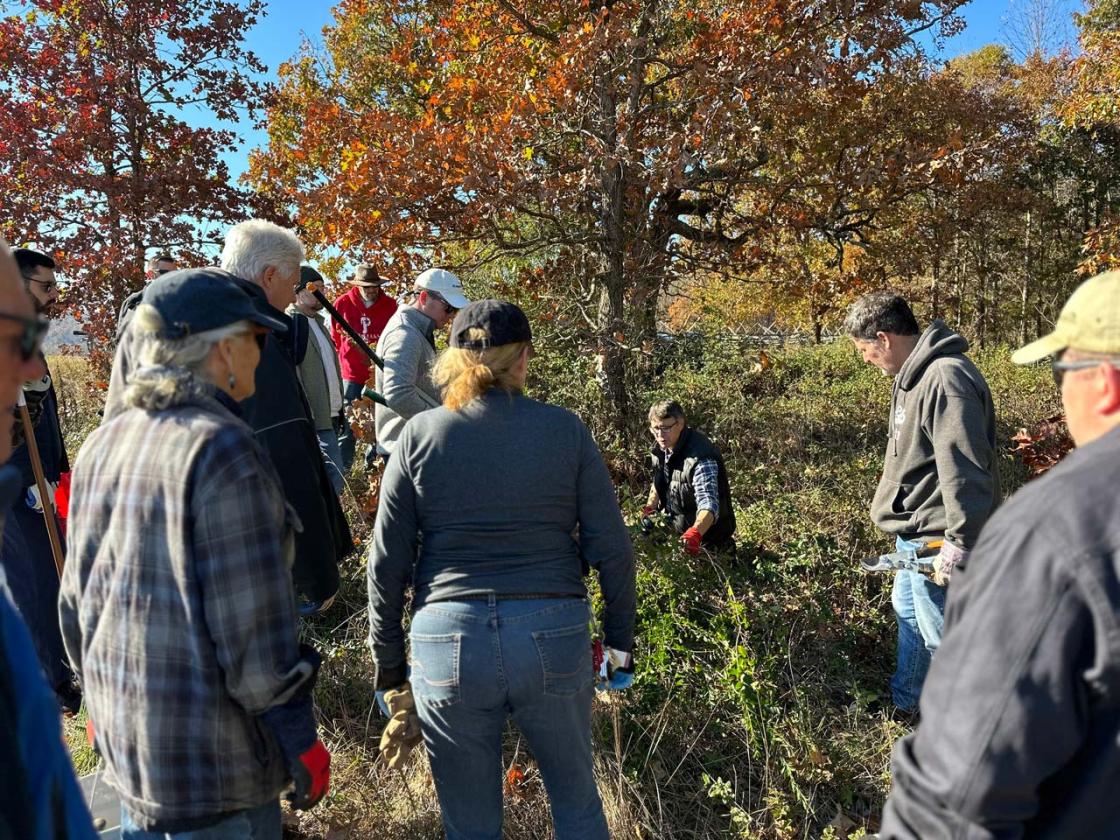
What purpose do you see for environmental conservation and land management when it comes to interpreting preserved battlefields? How can conservation help explain the story of the battlefield?
Throughout my life I’ve gone and visited different battlefields. I’m definitely not an expert, but I choose to read books on the Revolutionary War, the Civil War and World War II. My son is really into it as well, so he and I like to go to the historic battle sites and tour them on bikes. One of the things that I think is really cool from an interpretation standpoint, is when we look at the landscapes we have now, having it be an open field versus a forest might hint to what the site looked like back during the battle. But if you look at what’s growing there, most of our fields are invasive plants. In the case of Virginia, they’re weeds, fescue and cool season grasses, not the native warm season grasses that would have been there at the time of the battle. Same with our forests.
One of my goals of restoring native habitats is to bring them back to how they would have looked at the time of battle. Then, we can put up a sign and tell people about the work that we’re doing — this is what the site would have looked like in wartime, even down to the plants that were here! By getting an area back to oak-hickory forest types or restoring wetlands, we’re not only making these lands more honest to what they were historically but also creating a great opportunity to tell a story to people about our environmental efforts. That’s going to excite people and get more visitors to come out, especially over time as we get healthier ecosystems, see more birds, pollinators and critters, and establish better trails.
Would you consider invasive species to be the biggest issue that you have to combat on a typical basis?
Invasive species are the biggest problem; they’re aggressive and take over an ecosystem by suppressing the native plants and changing its composition. For instance, where you might have an open area underneath the canopy, now it's covered with invasive grasses or vines. It significantly affects wildlife because creatures are adapted to a certain environment, and when an open area is suddenly covered up by dense weeds, things change.
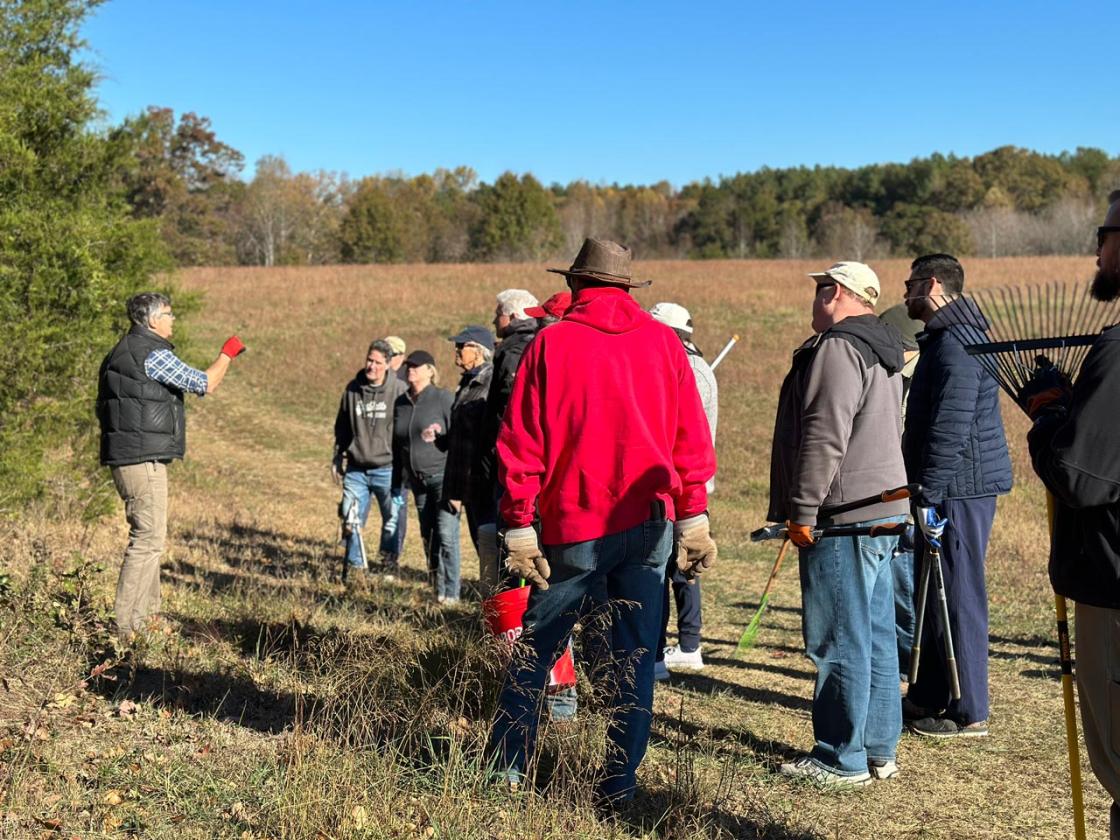
Also, a big problem are the invasive species that move into the riparian areas — areas near creeks, ponds and wetlands. Invasive species that take over those sites supplant native trees and shrubs and don’t do a good job of holding in the soil, with the result that more nutrients and sediments flow into the creeks and get into places like the Chesapeake Bay, which causes lots of problems and long-term consequences.
Further, most invasives are not as good at sequestering carbon as native plants would be. Certainly, this is the case with trees. But in open fields native grasses can be great carbon sinks. They have roots that go many feet under the ground and push carbon down. Similarly, wetlands are great carbon sinks.
How are we tackling this issue? You recently led a volunteer event at Cedar Mountain Battlefield to help combat invasive species; how does this help?
It’s a multiple step process but getting out there with volunteers is one of the best ways to get these projects going. Go fight weeds, plant trees, and get people engaged. Have people take ownership of this place, get the work started, and keep building on that. We had this volunteer event at Cedar Mountain in the beginning of November where people were so excited, and we got so much done. The best part is that now we have people engaged at that site, which means we’ve built momentum. And as we work on it, we’re developing a long-term plan involving collaboration with partners.
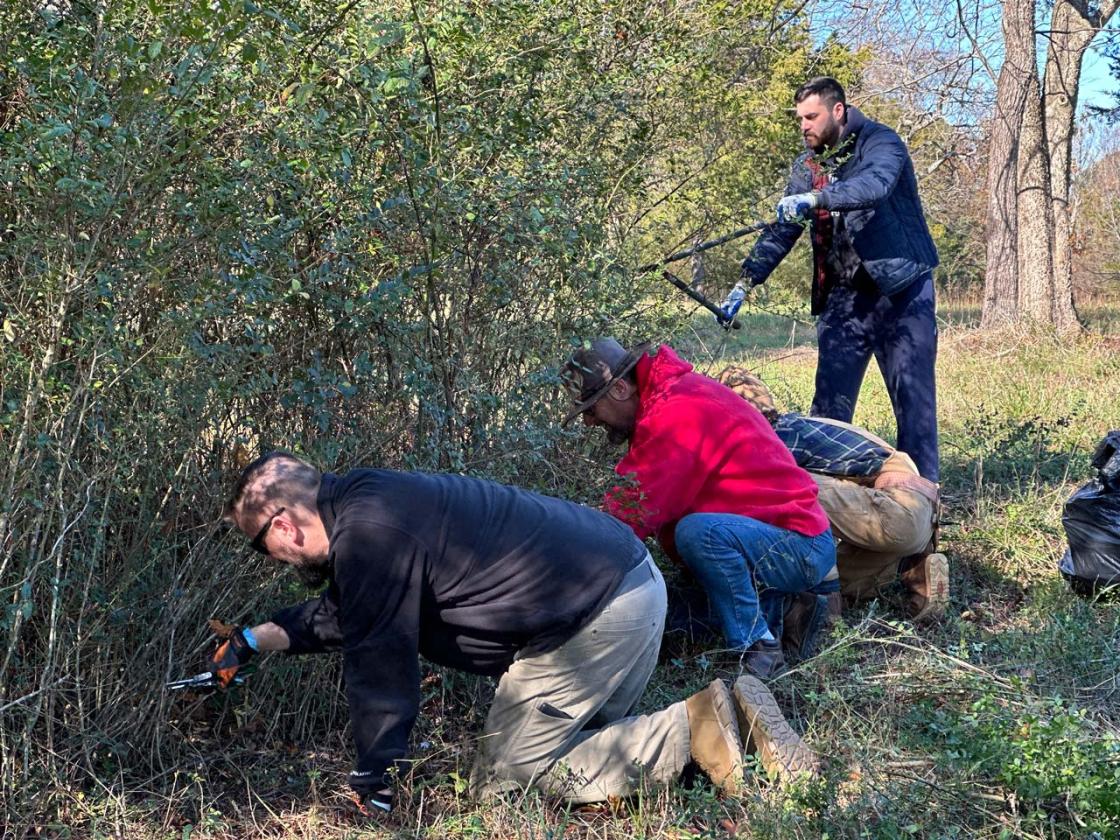
For our members, and people that visit battlefields across the country, what can they do to help combat environmental threats, like invasive species growth, on historic lands?
When we get volunteers out, we make it as much about training people and empowering them as it is about getting a lot of work done in the four hours that we’re out there. We talk about how to do this work safely and effectively. We use a lot of herbicides, but only safe herbicides, and we want people to understand the difference. Then, battlefield friends groups can come out periodically on their own and put these methods into practice. That’s what I’m trying to do at Cedar Mountain.
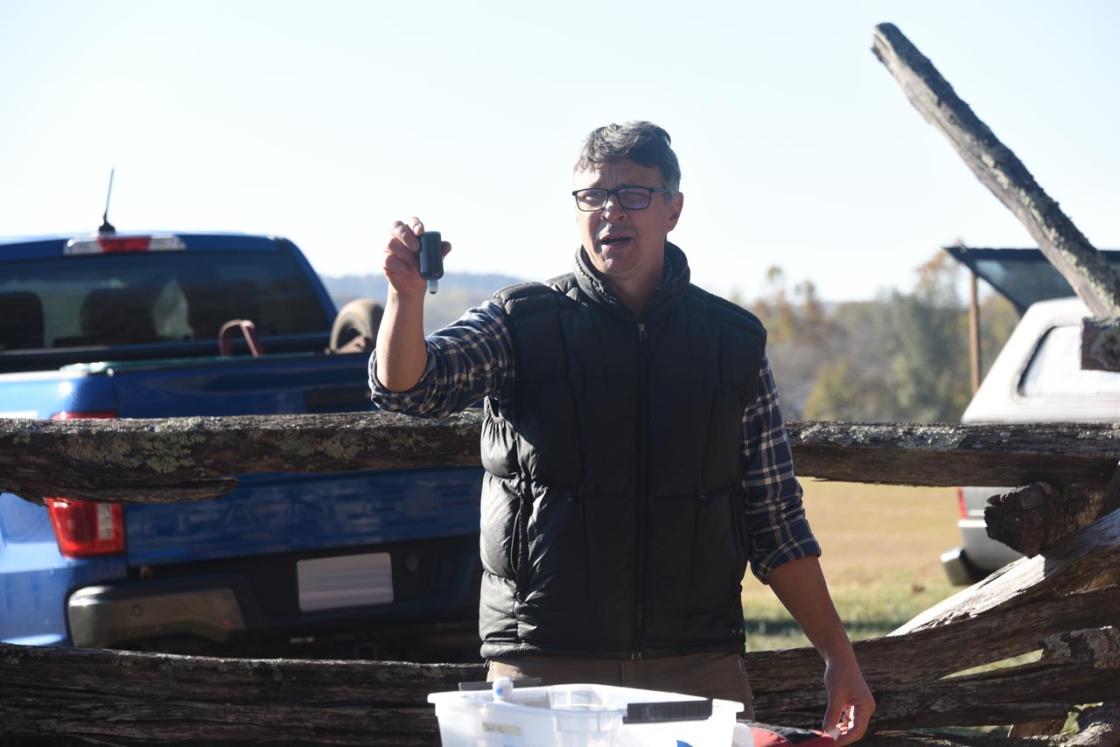
At each event, I usually focus on one thing — train you on how to do this one method or show you three different species to keep it simple, and then work on that all day. At Cedar Mountain, we focused on privet, multi-floor rows, and honey suckle. We showed people how to cut and dab with herbicide. We only put herbicides on the freshly cut stems; it doesn’t go all over. Every person got a two-ounce bottle with a dauber. We spent all day, and everyone came back with half-full daubers. That’s how little herbicide we used. And next time we come out, I’ll want to focus on another skill and show them new techniques or invasive species. By doing that, people get an experience that isn’t overwhelming.
Afterwards, people can go be guerilla stewards. When you’re hiking and see invasives on the trail, you now know what you’re doing and can go ahead and pull it. When I go hiking, I keep hand tools. And if I go past a patch of invasives on the trail, I’ll pull it, or cut it and dab it. I’m trying to empower people to do good work.
What have you found special about working on battlefields, especially with volunteers?
It's because these places are so cool and there's such an opportunity to get people involved in the work. At this last event [Cedar Mountain], we had a ton of people come out because it was an old battlefield. From the standpoint of getting people excited about helping with the work, we’re in a great place. People are showing up because it's so neat to work on battlefields. As an opportunity to do environmental work, I want to do it in a place where people are going to come and appreciate it for years down the road — the Trust is doing just that!
P.S. On April 6, 2024, volunteers will muster at battlefields, museums, cemeteries and historic sites for the Trust's 28th annual Park Day! Since 1996, community-minded citizens at Park Day events across the country have contributed hundreds of thousands of volunteer hours as they built trails, raked leaves, painted signs, erected fences and much more. Both longtime stalwarts and new sites are invited to register online at www.battlefields.org/parkday by February 1, 2024.
